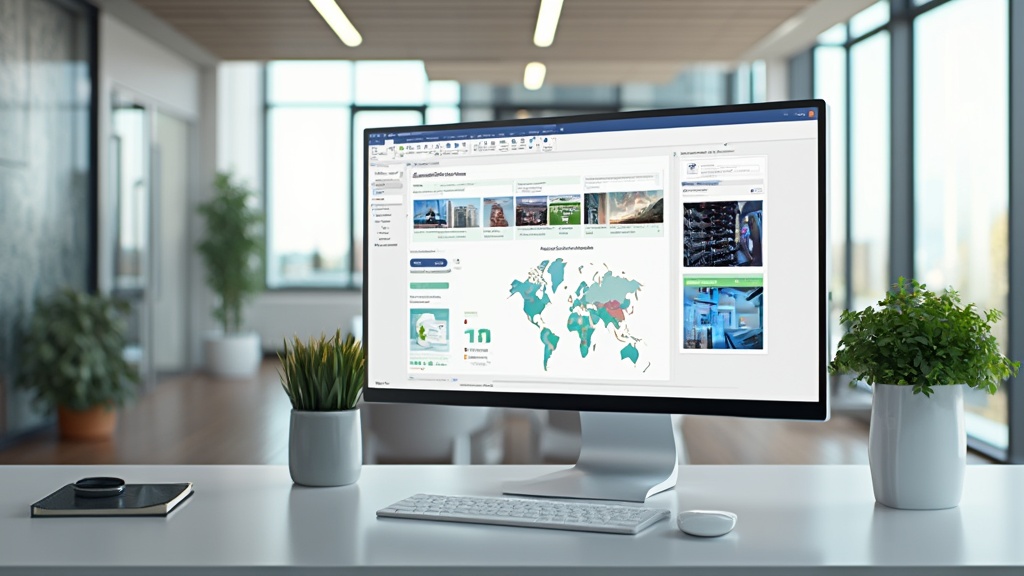Introduction
In the realm of data visualization, the integration of images into Power BI reports transcends mere aesthetics; it transforms how information is communicated and understood. By effectively utilizing visuals, organizations can enhance storytelling and engage their audience, driving operational efficiency and informed decision-making.
However, challenges such as time-consuming report creation and data inconsistencies often arise, hindering the potential impact of these reports. This article delves into the fundamentals of image integration, dynamic image management techniques, various image types, best formatting practices, and essential accessibility considerations, offering practical solutions to elevate Power BI reporting.
Through insightful case studies and expert recommendations, readers will discover how to harness the power of visuals to create compelling narratives that resonate with both technical and non-technical stakeholders alike.
Fundamentals of Image Integration in Power BI
Incorporating visuals into BI photos analyses greatly enhances visual storytelling and captivates your audience, making it an essential element for fostering data-driven insights and operational effectiveness. To begin, you can easily upload bi photos directly to the Power BI service or use URLs from online sources. The ‘Image’ visual feature allows you to add bi photos to pages, enabling customization of size and positioning for optimal visibility.
Effective utilization of bi photos not only improves the aesthetic appeal but also enhances accessibility, which is crucial for informed decision-making. However, challenges such as time-consuming documentation preparation and information inconsistencies can hinder the effectiveness of these documents. To address these issues, White Box provides customized dashboard creation services, including:
- A ‘3-Day BI Sprint’ for swift data generation
- A ‘General Management App’ for comprehensive oversight and intelligent evaluations
A case study involving a client in commercial property management illustrates this effect: the organization shifted to a robust, interactive dashboard that employed visuals to communicate intricate data narratives, leading to clearer insights and enhanced decision-making. Research indicates that documents incorporating relevant visuals, such as bi photos, significantly enhance viewer engagement, emphasizing the importance of image integration in BI presentations. Staying updated on recent enhancements in bi photos and their visual storytelling techniques can refine your approach further, ensuring that your reports resonate well with both technical and non-technical users alike.
Furthermore, leveraging AI can improve data quality and provide training, enhancing the overall effectiveness of your reporting efforts.
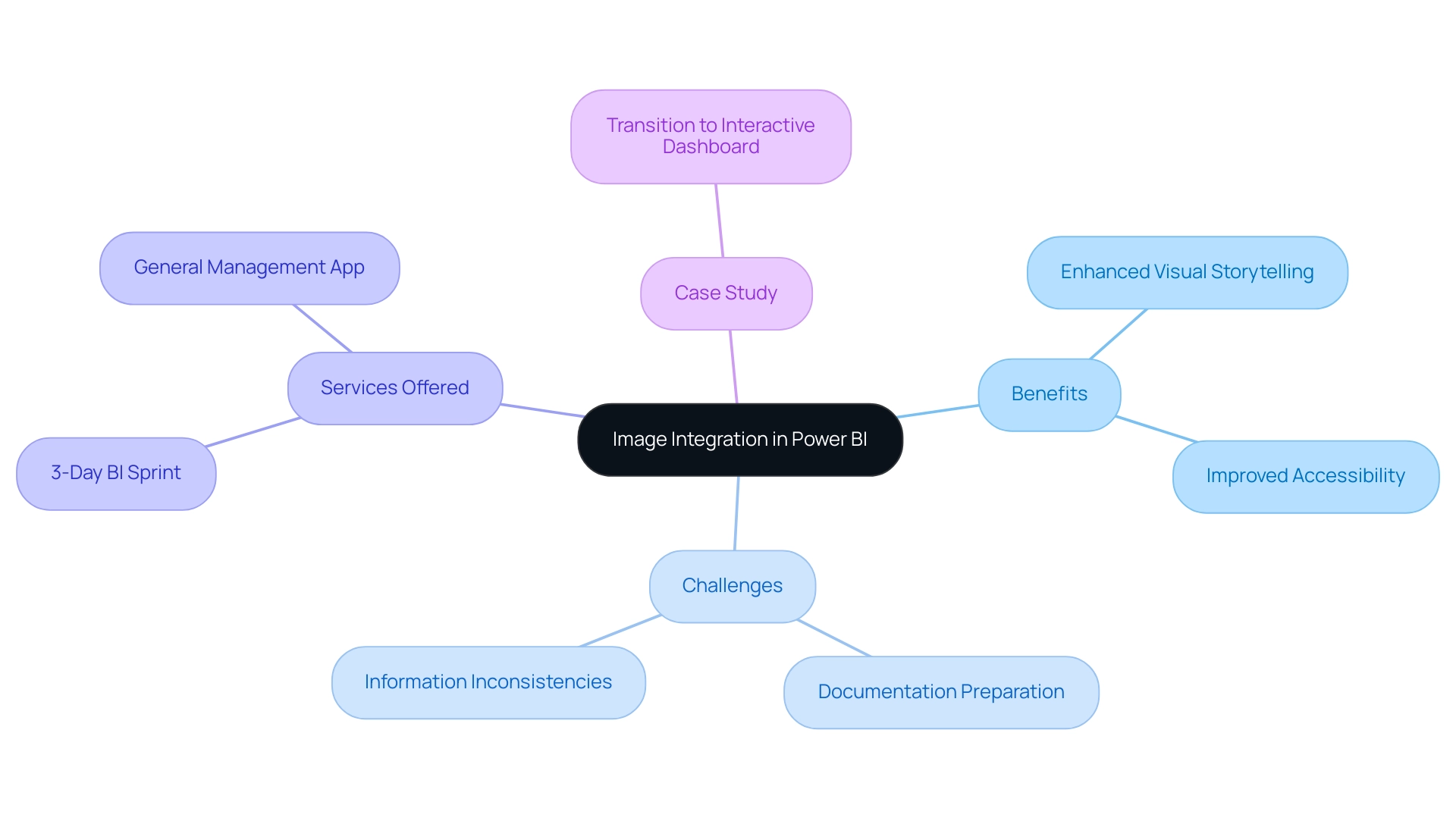
Dynamic Image Management: Leveraging Google Drive for Power BI Dashboards
To dynamically handle BI photos, utilize Google Drive by storing graphics and creating a public sharing link. Start by creating a new column in your dataset that contains these photo URLs. This approach not only conserves valuable time but also guarantees that modifications made to the visuals in Google Drive are automatically displayed in your Power BI dashboard with BI photos, thereby enhancing the reliability of your analyses.
This addresses the common challenge of time-consuming report creation and ensures stakeholders receive actionable insights, such as visual trends and performance metrics, that guide decision-making. Be mindful of potential permission issues that can arise with Google Drive; as noted by the Community Support Team, ‘Sorry for that if you use Google Drive, the picture may not be displayed due to permission issues. Please refer to the following screenshot.
You can upload pictures to OneDrive and use the link.’ This underscores the importance of selecting the right platform for your image management needs. Furthermore, Coupler. Io has received high user ratings, with numerous testimonials emphasizing its effectiveness in enhancing insights and cost savings. For example, one user mentioned, ‘Coupler. Io has revolutionized our information management process, saving us hours each week.’
Users are encouraged to test dynamic links to ensure they function correctly within the dashboard, as demonstrated in the case study titled ‘Final Touches and Testing.’ By utilizing these methods, along with the use of code MSCUST for a $150 discount on registration, which can support your visual management strategy, you can create BI photos that are visually appealing and reflect the most recent data available while improving operational efficiency.
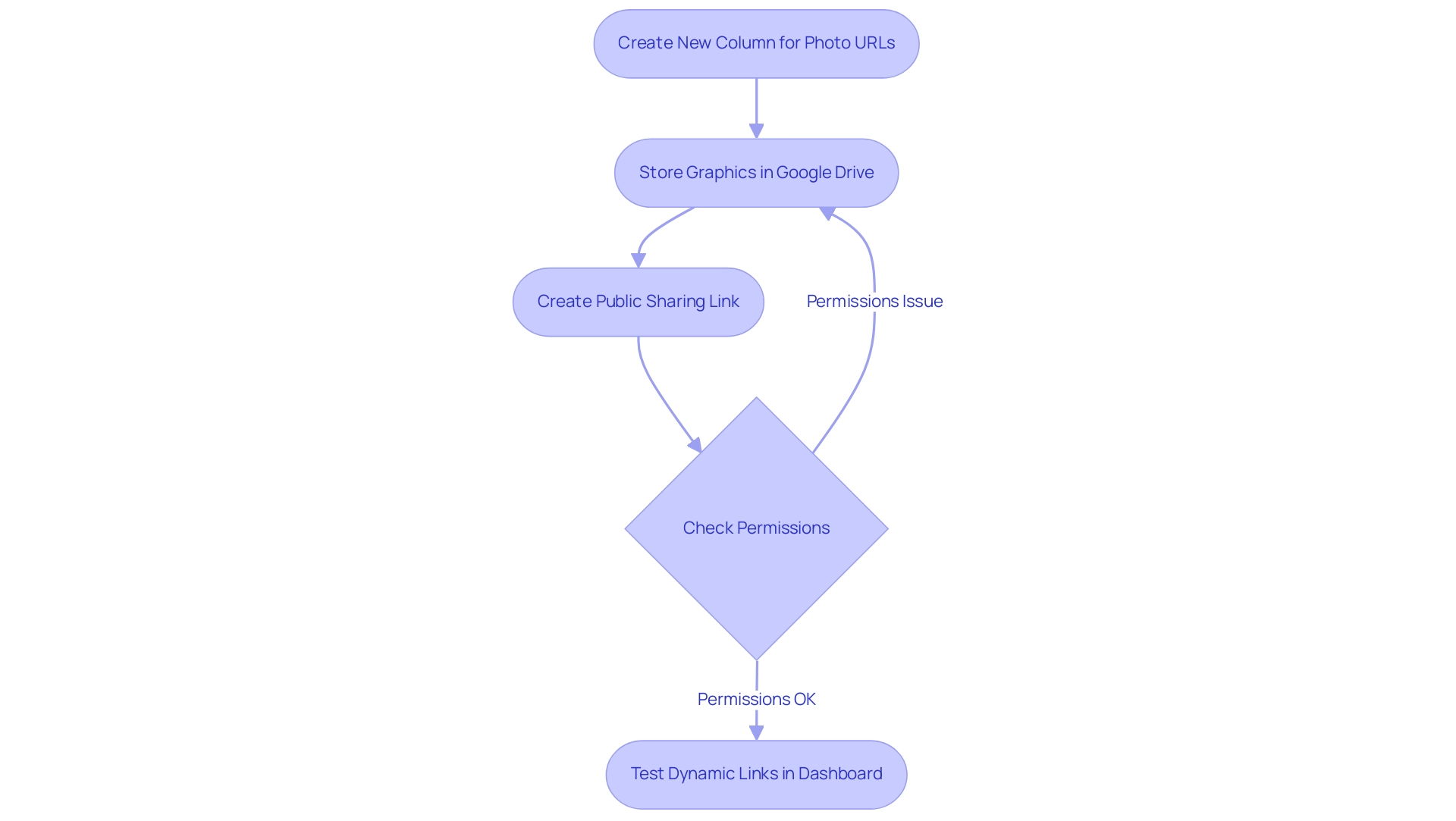
Exploring Different Image Types: Embedded, External, and Data-Bound
BI photos include three main visual types: Embedded, External, and Data-Bound, each with unique characteristics and uses essential for operational efficiency.
-
Embedded visuals are stored directly within the Power BI file, granting portability for sharing reports. However, this convenience can lead to increased file sizes, potentially impacting performance, especially with larger datasets.
-
External visuals, on the other hand, are linked from web sources, helping to maintain smaller file sizes, but they require a consistent internet connection for access.
-
Data-Bound visuals offer a dynamic method for creating BI photos, showcasing visuals based on particular contexts within your dataset and enabling customized representations that enhance narrative presentation.
Considering the challenges in utilizing insights from Power BI dashboards—such as time-consuming content creation, inconsistencies in information, and lack of actionable guidance—it’s important to note that Power BI Premium allows users to access resources without needing Pro licenses, which can impact the selection of visuals based on accessibility needs.
Furthermore, visuals stored in a database can be incorporated into reports using the same report item as static visuals, offering flexibility in management. According to industry insights, the selection between these visual types depends on your accessibility requirements, performance considerations, and the necessity for information integrity.
As Kaushal Patel notes, ‘In simple manner, BI Premium is a service provided by Microsoft that has great features to play with in,’ which underscores the importance of understanding the capabilities of BI Premium in relation to image usage.
Additionally, incorporating Robotic Process Automation (RPA) tools such as EMMA RPA and Automate can simplify repetitive tasks related to information management, thus enhancing overall operational efficiency. Comprehending these options enables you to utilize BI effectively, maximizing your reporting capabilities and driving business growth through informed decision-making.
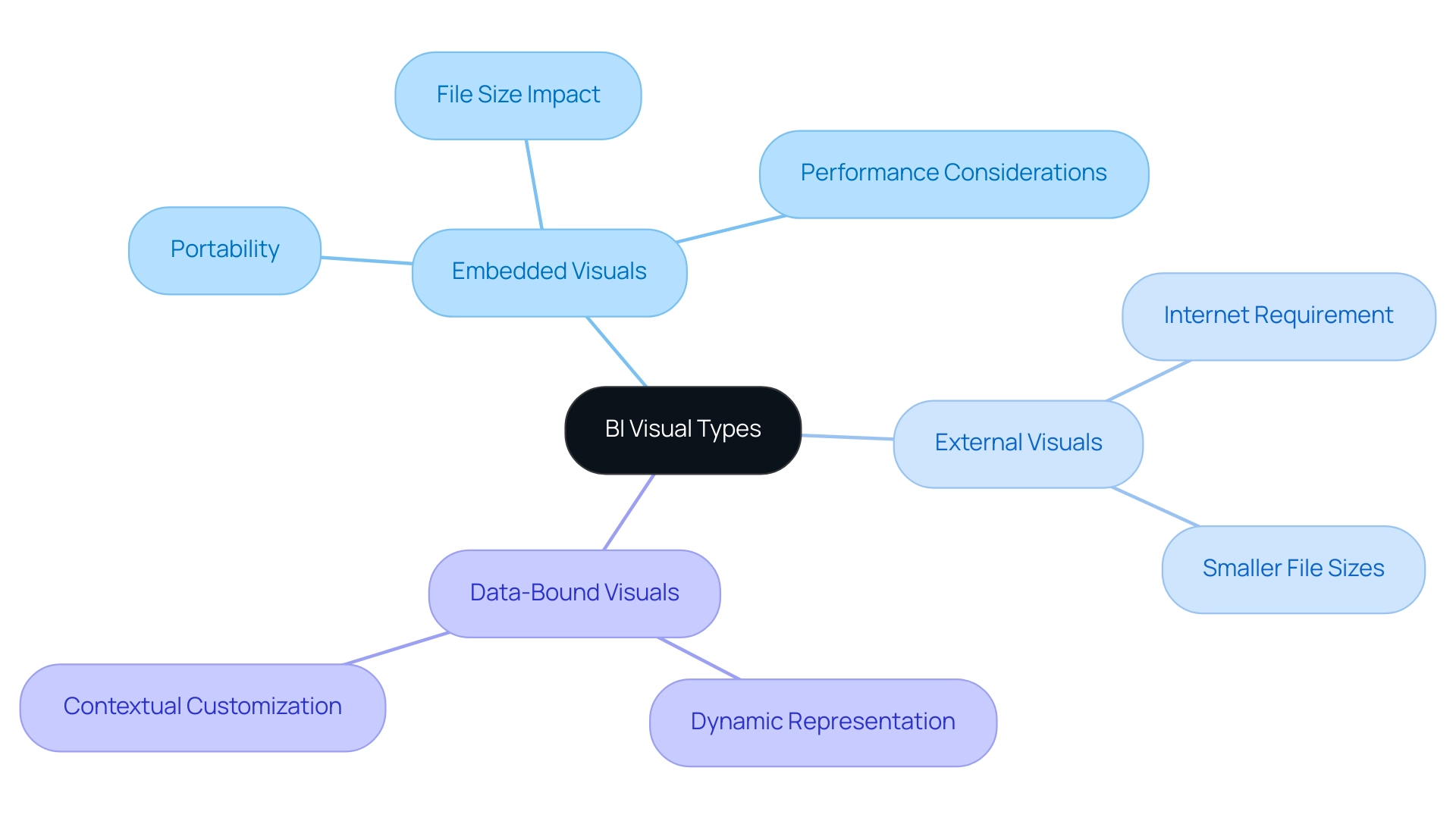
Best Practices for Formatting Images in Power BI Reports
To effectively format visuals in Power BI and address common challenges such as time-consuming report creation, data inconsistencies, and the lack of a governance strategy, adhere to these best practices:
- Prioritize consistency in visual size and aspect ratio to create a uniform look across your report.
- Utilize high-resolution visuals to prevent pixelation, as 8-bit graphics may saturate around levels 220-235, underscoring the importance of clarity in your displays.
- Incorporate subtle borders or shadows to significantly enhance the visibility of visuals, making them stand out without overwhelming the viewer.
It’s essential to prevent overcrowding your document with unnecessary visuals, as this can distract from the overall message and cause confusion, further worsening problems of mistrust in the information provided. By enhancing visuals for accessibility and usability, offering alternative text, and ensuring compatibility across devices, you can transform your documents from mere collections of data into compelling narratives that provide clear guidance. These strategies not only enhance clarity but also empower stakeholders to take informed actions based on trustworthy insights.
Studies show that documents containing well-organized visuals improve understanding and enable audiences to capture insights more efficiently.
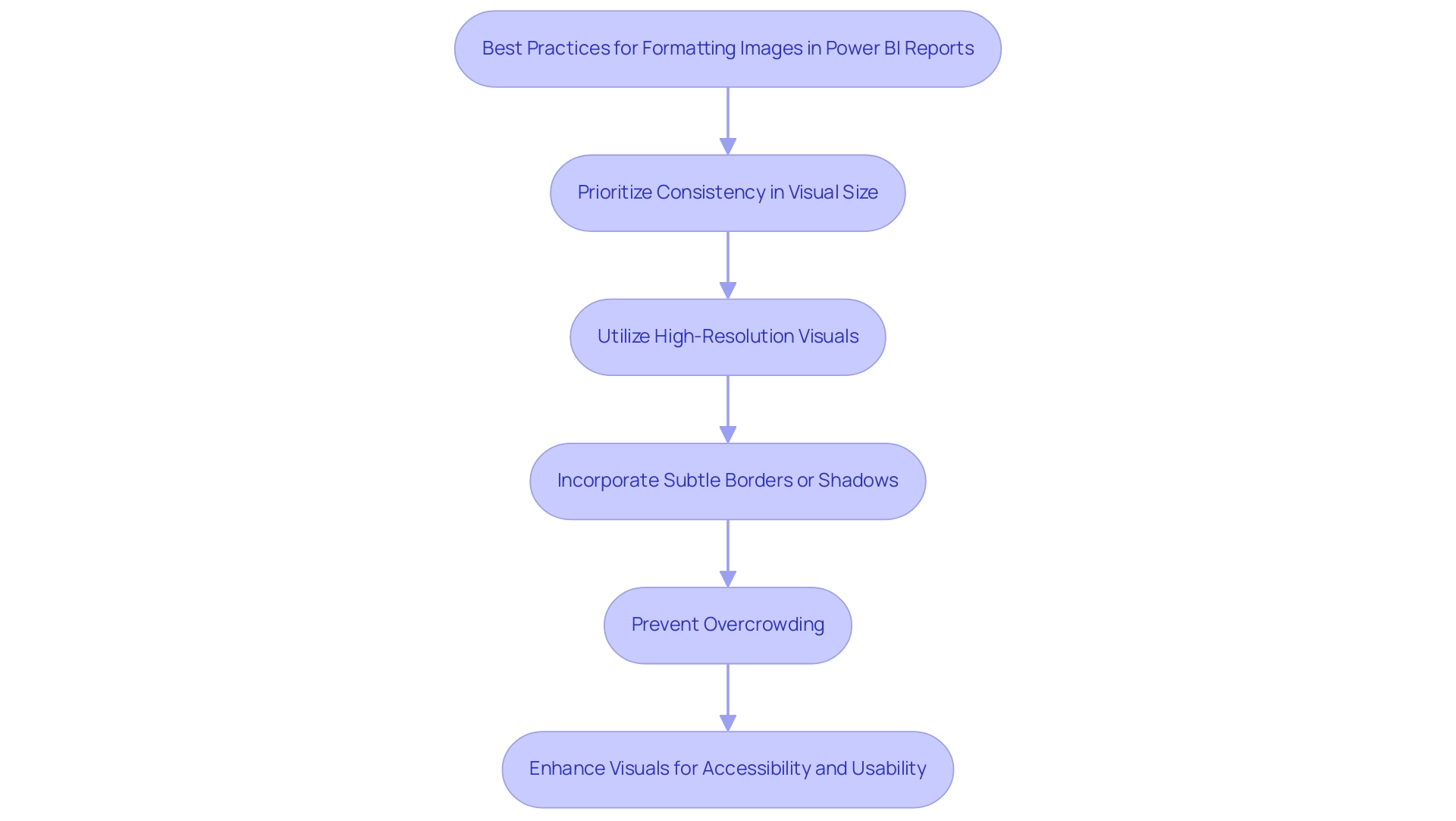
Ensuring Accessibility: Considerations for Using Images in Power BI
To ensure that all users can effectively engage with your Power BI reports while overcoming common challenges, it is essential to adhere to accessibility standards when incorporating visuals. This includes the use of descriptive alt text, which provides vital context for screen readers. Aisha, a user of a screen reader, emphasizes the significance of this feature by stating, As a blind person, descriptive alt text enables me to navigate the information with confidence.
Additionally, maintaining a high contrast between images and their backgrounds enhances visibility, making the content more accessible to those with visual impairments. Tools like the Color Contrast Analyser can be invaluable in identifying and suggesting color combinations that meet contrast requirements. It’s also crucial to consider the file types utilized, as not all formats are universally supported, which can hinder user experience.
By prioritizing these accessibility features, you not only enhance the usability of your documents but also directly tackle challenges such as time-consuming creation and inconsistent presentation. To offer practical guidance, ensure that each report contains clear next steps, such as specific recommendations based on the information presented. For instance, the animated inner ring of the donut chart in your visualizations can indicate that it will fill up to 100%, providing clear and engaging feedback to users.
Recent developments in Power BI highlight the importance of inclusive design, which accommodates various preferences for information presentation, whether through text-based formats or visualizations. The implementation of accessible visual representations is crucial for conveying complex information to all users, as demonstrated in the case study titled ‘Conclusion on Visualization Accessibility,’ which emphasizes the importance of clear guidance in interpretation. By implementing these strategies, you foster a more engaging and equitable experience for all users, ultimately allowing for better data governance and trust in the insights provided.
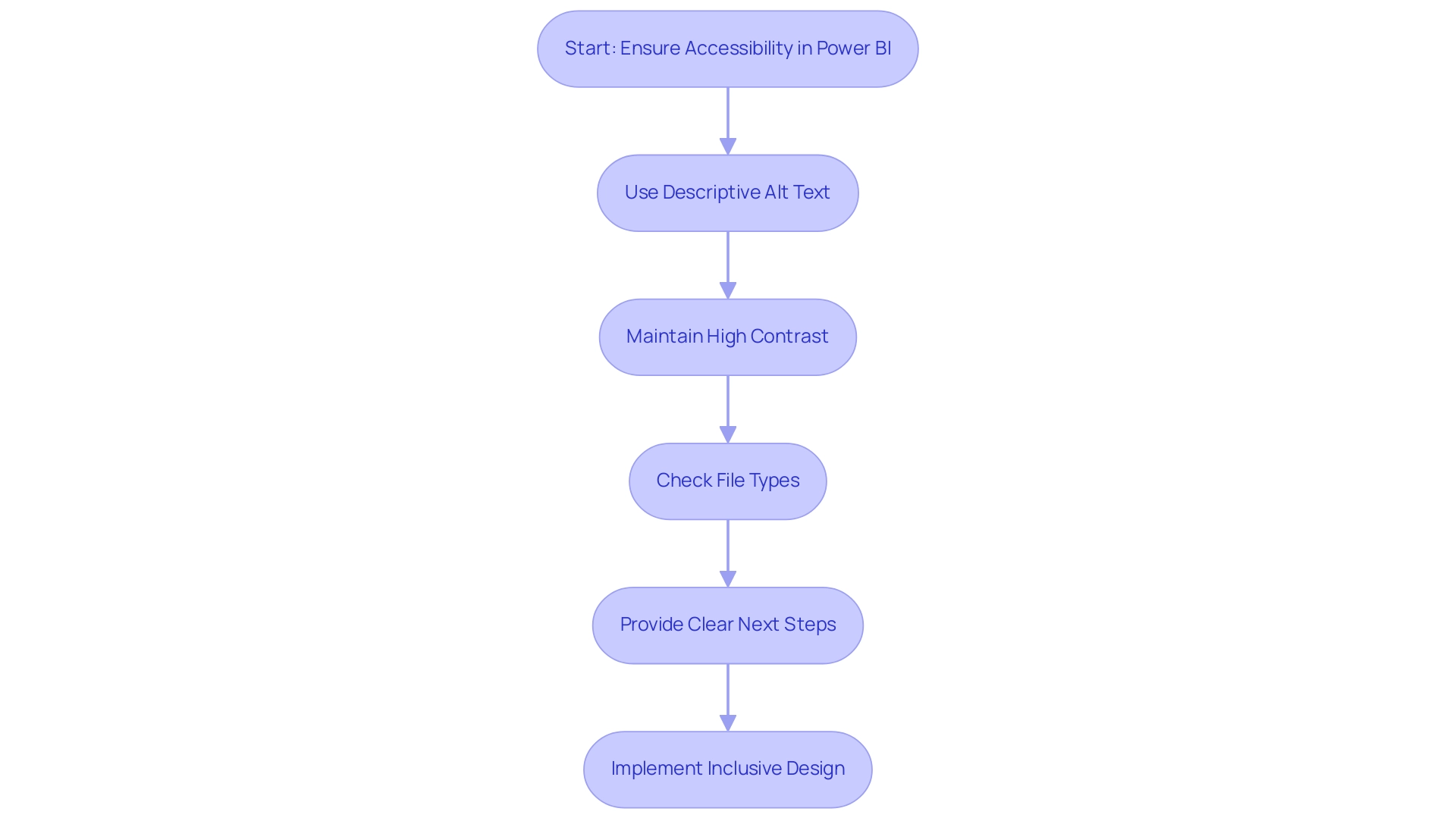
Conclusion
Integrating images into Power BI reports is not just about enhancing aesthetics; it’s a transformative approach that significantly improves data storytelling and audience engagement. By understanding the fundamentals of image integration, utilizing dynamic image management techniques, and selecting the right types of images, organizations can create visually compelling reports that drive operational efficiency. Best practices for formatting images and ensuring accessibility further empower users to derive actionable insights, making data interpretation clearer and more inclusive.
The challenges of report creation and data inconsistencies can be effectively addressed through strategic image management and the adoption of tools like Google Drive for dynamic updates. By leveraging these techniques, stakeholders can access real-time insights that are both engaging and informative. Additionally, understanding the distinctions between embedded, external, and data-bound images enables teams to optimize their reports for performance and accessibility, ensuring that every viewer, regardless of their background, can engage with the data meaningfully.
Ultimately, the integration of well-formatted and accessible images in Power BI not only enhances report clarity but also builds trust in the data presented. By prioritizing these strategies, organizations can transform their reporting processes, empowering decision-makers to act confidently based on accurate and visually engaging data narratives. The time is ripe to embrace these practices, fostering a culture of informed decision-making and operational excellence that resonates across all levels of the organization.

